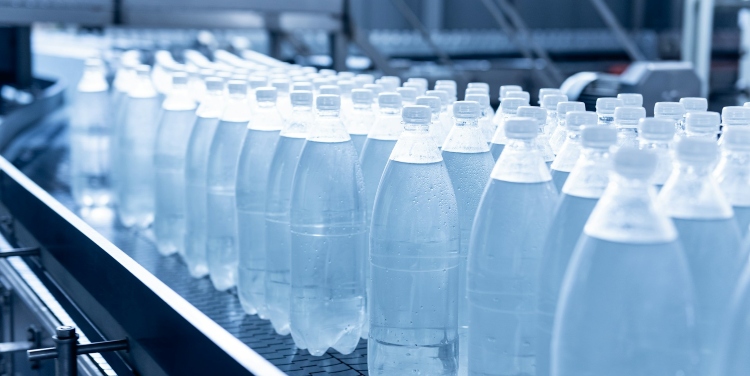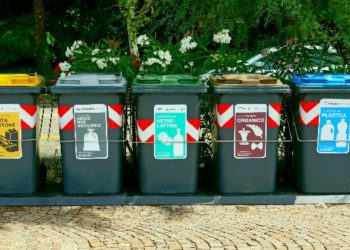Today, plastic waste is a big problem for our planet. According to UICN, every year almost 14 million tons of plastic end up in the ocean. As a result, plastic makes up 80% of all marine debris found from surface waters to deep-sea sediments. This is not good news for our environment.
To be realistic, manufacturers will most likely never stop making plastic products, as there are still many benefits to be gained from it, if we forget about the harm it causes. So to solve this problem, we have several options:
- Find better ways to package things
- Create new packaging materials and smarter designs can help reduce plastic waste.
Fortunately, companies are working hard to develop solutions that are better for our planet. So in this article, we will discuss the latest trends and innovations in plastic packaging.
Trends and Innovations in Plastic Packaging Materials
Companies are creating new packaging materials that are better for the environment. Bio-based plastics made from plants or other natural sources are one option. These can break down in nature instead of sitting in landfills forever. Biofilm™ by Polystar Plastics that is made from sugar cane is one of those materials. Sugar cane captures CO2 from the atmosphere and releases oxygen, making it a green material.
Another trend is using more recycled plastic to make packaging. This gives new life to plastic waste instead of making all new plastic. Many companies now use plastics that can be easily recycled after use.
Scientists are making plastic that is strong but light. This lets packaging use less plastic. Some of these plastics keep food fresh longer, reducing waste.
By using different types of plastic, companies can make packaging that has a smaller impact on the environment.
Innovative Packaging Designs
Brands are using new materials and clever packaging designs focused on sustainability. Many are using simple designs that use as little packaging as possible. Some examples are thinner plastic bottles, lighter containers, and less packaging.
Reusable and refillable packaging is also popular. Loop offers reusable containers that can be returned, cleaned, and refilled. For example, The Wally Shop lets customers refill their bottles and containers.
Smart packaging helps sustainability. Time-temperature indicators let customers know if perishable items stayed cold. Sensors can detect if food is opened or tampered with. Reusable packaging shows how to reuse or recycle it.
Some designs keep products fresh. Sealable openings and modified atmosphere packaging keep oxygen out. Antimicrobial packaging films stop bacteria from growing. This makes food last longer.
So it’s good to see that some brands are rethinking packaging to reduce waste.
Regulatory Landscape and Consumer Demand
Governments around the world are implementing policies to reduce plastic waste from packaging. The European Union have set targets for reducing packaging in member states. These targets are 5% by 2030, 10% by 2035, and 15% by 2040. They’ve also set targets for reducing plastic waste. Additionally, several countries (UK, Canada, Australia, France) have banned certain single-use plastics like straws and bags.
In addition to regulations, there is growing demand from consumers for more environmentally-friendly packaging options. Surveys show that over 60% of shoppers want brands to use more sustainable packaging. Younger generations in particular favor companies that prioritise eco-friendly practices.
Many leading brands and companies have responded by adopting innovative sustainable packaging strategies. Coca-Cola is using renewable, plant-based sources for its bottles. McDonald’s replaced plastic foam containers with 100% recycled packaging.
As regulatory pressures increase and consumer preferences shift, more businesses are being driven to invest in sustainable packaging solutions.
Challenges and Future Outlook of Plastic Packaging
While progress is being made, the packaging industry still has a long way to go in becoming more sustainable. It’s expensive and hard to make new eco-friendly materials in large quantities. It’s also hard to make new packaging as protective as old packaging.
For reusable packaging to work, people have to change how they recycle and return things. Building reverse logistics networks is complex.
But the benefits make these challenges worth it. If everyone works together, we can make packaging more sustainable.
Partnerships between the public and private sectors can fund research and pilot new systems. Recycling standards and deposit schemes can help recycle more. Labels and education are key to getting people to use new packaging.
The packaging industry has reduced plastic waste over the last decade. But there is still a lot of work to do to make the switch to a circular, sustainable model. With more investment, innovation, and cooperation, we can make plastic packaging have a smaller environmental impact.
David Prior
David Prior is the editor of Today News, responsible for the overall editorial strategy. He is an NCTJ-qualified journalist with over 20 years’ experience, and is also editor of the award-winning hyperlocal news title Altrincham Today. His LinkedIn profile is here.













































































